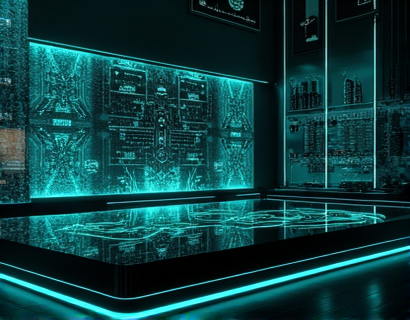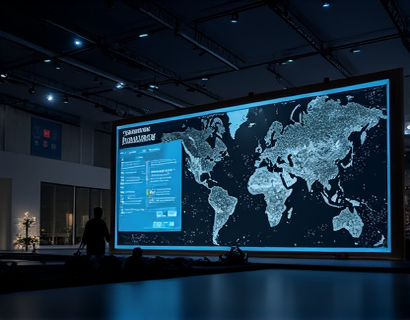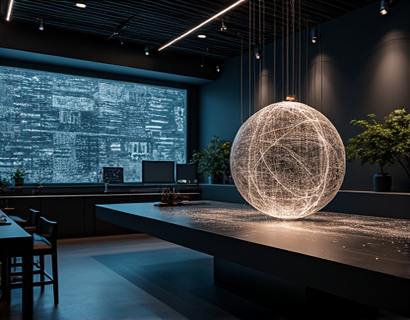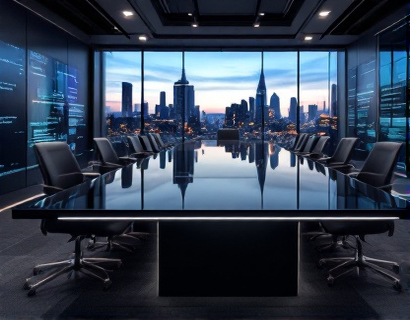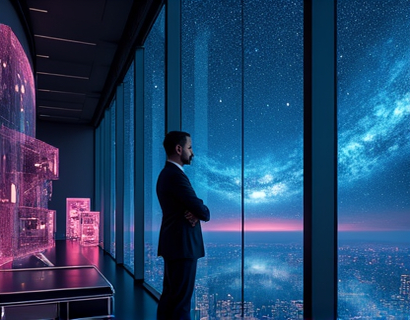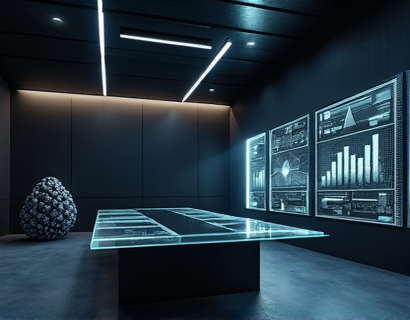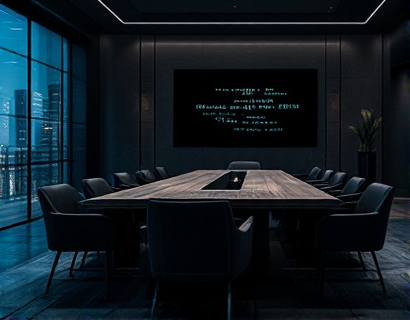Embracing the Future: How Augmented Reality is Revolutionizing E-Commerce and Enhancing Daily Life
In recent years, the integration of augmented reality (AR) into e-commerce has opened new avenues for consumers to interact with products in immersive and innovative ways. This technology, once confined to gaming and entertainment, is now transforming the way we shop and experience products online. By overlaying digital information onto the physical world, AR provides a unique and engaging shopping experience that bridges the gap between the virtual and real worlds.
The adoption of AR in e-commerce is not just a trend but a significant shift in how businesses approach customer engagement and satisfaction. For tech-savvy consumers, AR offers a glimpse into a future where shopping is not just about browsing products but experiencing them in a fully interactive environment. This article delves into the various ways AR is reshaping the e-commerce landscape, from product visualization to virtual try-ons, and explores how these innovations can elevate your daily life.
Understanding Augmented Reality in E-Commerce
Augmented reality in e-commerce refers to the use of AR technology to enhance the online shopping experience. Unlike traditional e-commerce platforms that rely solely on static images and descriptions, AR allows customers to see how products would look and function in their own environment. This is achieved through various applications, such as AR mirrors for trying on clothes virtually, AR apps for visualizing furniture in your home, and interactive product demos that provide a deeper understanding of the product's features and benefits.
The core idea behind AR in e-commerce is to reduce the uncertainty and risk associated with online shopping. By providing a more realistic and interactive preview of products, AR helps consumers make more informed decisions, leading to higher satisfaction and reduced return rates. For instance, a customer looking to buy a new sofa can use an AR app to see how different designs and colors would look in their living room before making a purchase. This not only enhances the shopping experience but also builds trust between the consumer and the brand.
Product Visualization: Seeing Products Come to Life
One of the most compelling applications of AR in e-commerce is product visualization. Imagine being able to see a piece of art or a decorative item in your home before buying it. AR technology makes this possible by allowing you to place a 3D model of the product in your space using your smartphone or tablet. This feature is particularly useful for items that are difficult to visualize through images alone, such as large furniture, artwork, or home decor.
For example, an AR app can overlay a 3D model of a coffee table in your living room, giving you a sense of scale and how it fits with your existing furniture. This level of interactivity not only makes the shopping process more engaging but also helps consumers envision how the product will fit into their lifestyle. By reducing the guesswork, AR visualization can lead to more confident purchasing decisions and a more satisfying unboxing experience.
Virtual Try-Ons: Transforming Fashion and Beauty Shopping
Fashion and beauty are sectors that have seen significant innovation through AR technology. Virtual try-ons allow customers to see how clothes, accessories, and makeup would look on them without the need for physical try-on. This is particularly beneficial for online shopping, where the lack of physical interaction can be a major drawback.
AR-powered virtual try-on features use facial recognition and 3D modeling to superimpose clothing and makeup onto a user's image in real-time. For instance, a fashion retailer can offer an AR mirror that lets customers try on different outfits, see how accessories complement their style, and even test makeup looks. This not only enhances the shopping experience but also increases the likelihood of a purchase, as customers can better assess how products fit and look on them.
Beauty brands have also leveraged AR to create virtual makeup tutorials and personalized recommendations. By analyzing a user's skin type and preferences, AR can suggest suitable products and demonstrate how they would appear on the user's face. This personalized approach not only improves customer satisfaction but also fosters a deeper connection between the brand and the consumer.
Interactive Product Demos: Deepening Product Understanding
Interactive product demos are another powerful application of AR in e-commerce. These demos provide a detailed and immersive look at a product's features and functionalities, which is especially useful for complex or technical items. For example, a tech accessory brand can use AR to create an interactive demo that shows how a smartwatch tracks fitness metrics, receives notifications, and integrates with other devices.
By breaking down the product into its components and demonstrating each feature in action, AR demos help consumers understand the value and utility of the product. This level of transparency can be particularly appealing for tech-savvy users who appreciate detailed information and are more likely to engage with brands that offer such insights. Interactive demos can also reduce customer queries and support requests, leading to a more efficient and satisfying shopping experience.
Enhancing Customer Engagement and Loyalty
The integration of AR in e-commerce goes beyond just improving the shopping experience; it also plays a crucial role in building customer engagement and loyalty. By offering unique and interactive features, brands can differentiate themselves in a crowded market and create memorable experiences that keep customers coming back.
AR can be used to create gamified shopping experiences, such as scavenger hunts within the app or interactive challenges that reward users with discounts or exclusive content. These engaging activities not only entertain customers but also encourage them to spend more time on the platform, increasing the chances of a purchase. Additionally, AR can be used to personalize the shopping experience through tailored recommendations and interactive content that resonates with individual preferences.
Brands that invest in AR technology demonstrate a commitment to innovation and customer satisfaction, which can significantly enhance brand loyalty. Customers are more likely to return to a store that offers a seamless, enjoyable, and technologically advanced shopping experience. By fostering a sense of community and interaction, AR can help build a loyal customer base that advocates for the brand.
Challenges and Considerations
While the benefits of AR in e-commerce are clear, there are also challenges and considerations that brands must address to implement AR effectively. One of the primary challenges is ensuring compatibility across different devices and platforms. AR experiences should be smooth and consistent, regardless of whether a customer is using an iOS or Android device, or a desktop or mobile browser.
Another consideration is the technical complexity involved in developing high-quality AR applications. Brands need to invest in skilled developers and designers who can create immersive and user-friendly AR experiences. Additionally, there is a need for robust infrastructure to support AR features, including fast internet connections and compatible hardware.
Privacy and data security are also critical concerns. AR applications often require access to user data, such as camera and location information, which must be handled with the utmost care to maintain customer trust. Brands must be transparent about data usage and implement strong security measures to protect user information.
The Future of AR in E-Commerce
As AR technology continues to advance, its role in e-commerce is poised to become even more significant. Future developments may include more sophisticated 3D modeling, improved real-time rendering, and the integration of AR with other emerging technologies like virtual reality (VR) and the Internet of Things (IoT).
For instance, VR could enable fully immersive shopping experiences where customers can explore virtual stores and interact with products in a completely digital environment. IoT devices can enhance AR experiences by providing real-time data and personalized recommendations based on a user's preferences and past purchases.
The potential for AR to transform e-commerce is vast, offering endless opportunities for innovation and customer engagement. As more brands adopt AR technology, we can expect to see a shift towards more interactive, personalized, and enjoyable shopping experiences that redefine the way we interact with products online.
In conclusion, augmented reality is not just a novelty but a powerful tool that can significantly enhance the e-commerce experience. By providing realistic product visualization, virtual try-ons, and interactive demos, AR helps consumers make informed decisions and fosters a deeper connection with brands. For tech-savvy consumers, AR represents a exciting frontier in online shopping, one that promises to make the digital marketplace as engaging and satisfying as the physical one.






